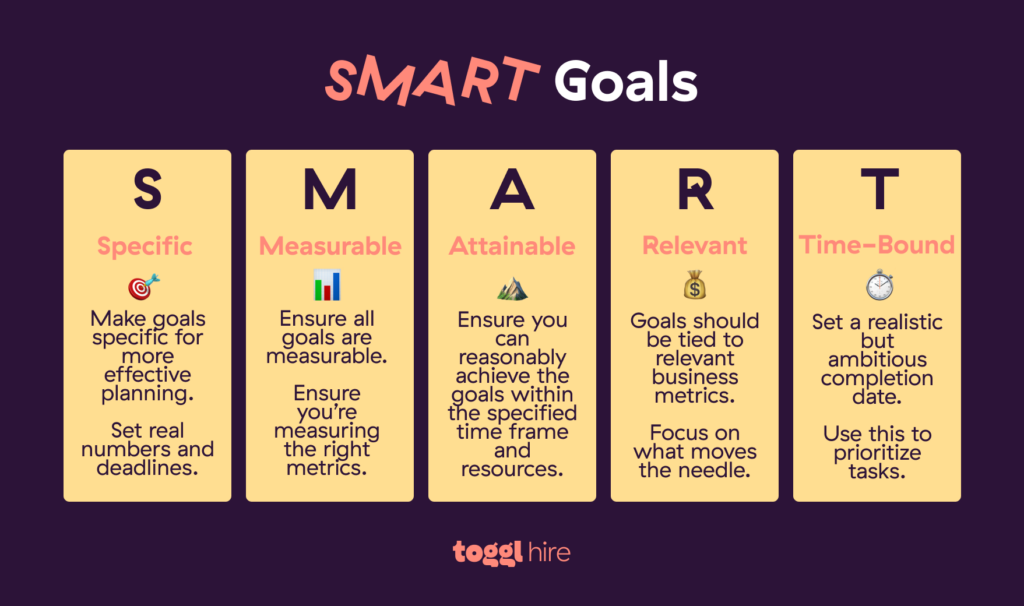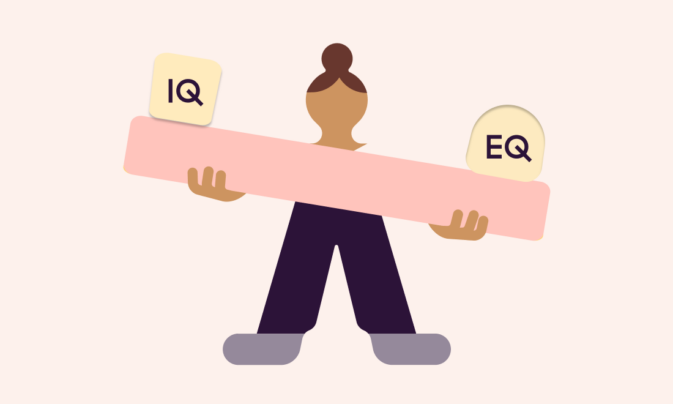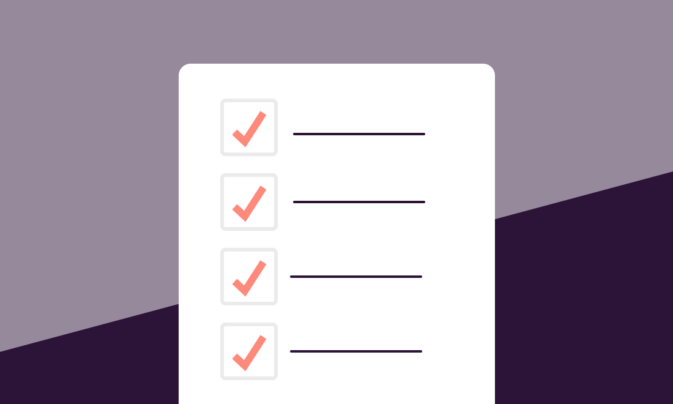The average tenure in a job nowadays is just 4.1 years. Long gone are the days of working 30 years for one company and waiting out a cushy retirement. In 2024, there are more opportunities than ever before, and employees are jumping at the chance to take advantage of them.
One tool that can help both employees and employers navigate this landscape is a professional development plan. This valuable document outlines an employee’s current and desired skills and professional and personal goals and gives them the steps necessary to achieve them.
While they’re useful for employees interested in growing into leadership roles or advancing in their careers, they’re helpful for you as an employer to learn to use so you can help current workers evolve within their roles in an effort to keep them in your company.
TL;DR — Key Takeaways
A professional development plan is a structured framework or a document that outlines an employee’s short-term and long-term career and personal goals, as well as suggests ways to achieve those goals.
There are six key steps to creating a personal development plan: understanding the employee’s career goals, doing a skill assessment, establishing SMART goals, creating an action plan, setting a timeline, and tracking progress.
The most common types of personal development plans include foundational, leadership, and performance improvement plans.
6 steps to create a professional development plan
No two professional development plans are alike. Each should be customized for the specific employee, their goals, preferences, and aspirations, as well as your company’s needs and various other factors. However, these six steps are a great starting point.
1. Understand the employee’s career goals
While you may have an idea of what your long-term goals are for an employee and what kind of knowledge and skills they should build, make sure you ask the employee for their opinion, too.
Find out what they want to achieve in their career, both short-term and long-term, whether it’s better internal mobility or just honing their skills in an existing role. If you (or they) are unsure what kinds of career goals make sense, take a look at these great examples.
| Overview | Example |
| Goals to acquire skills and master talents | Gaining public speaking experience |
| Gaining experience in new areas | Extending formal education or learning a new skill in a similar department |
| Taking on more roles and responsibilities | Management and leadership experience |
| Promotions and compensation targets | Getting a promotion |
| Building relationships | Building industry relationships and improving their professional profile |
| Improving productivity, work quality, and time management | Working towards greater career satisfaction and work-life balance |
For example, an SEO specialist’s short-term goals could be to get better with technical SEO, including website audits, building sitemaps, analyzing and improving website loading speed, and more.
Their long-term goals could be to improve their managerial skills through leadership training and continuing education to build a career path that leads them to be the next CMO in the company.
2. Perform a professional skills assessment
To identify professional development opportunities, create a plan, or sharpen up someone’s professional skills, you need to first determine what those skills are.
This is most commonly done through self-assessment. Employees sit down and evaluate the skills they already have, aspirations for their future career path and professional life, hopes for the future, and more. The tools for self-assessment are tests like DISC or The Big Five.
While these tests have a certain value, they are also not very accurate, as employees can self-report embellished versions of themselves (understandably so — we all do it!).
Instead, it’s better to use tools like the 9-box grid or third-party skills tests for both soft and hard skills to get a more accurate depiction of what they’re capable of.
Tests like the ones we offer at Toggl Hire help you assess soft and practical skills across a range of industries and roles. Check out our test library for a full list.

3. Establish SMART goals
SMART stands for Specific, Measurable, Achievable, Realistic, and Time-bound. Smart goals are crucial for creating just about any plan, including a professional development plan (PDP).
Let’s say an employee has a professional goal to improve their data analytics skills in their current job. A SMART version of that goal would be that they should attain basic proficiency in Microsoft Power BI (enough to analyze and visualize a basic data set) within the next three months.
Or, let’s say that you, as a manager, set a goal for your employees. You want them to improve their customer service performance, focusing on phone conversations as their main channel. The SMART version of that goal is that they should improve the first call resolution by 20% by the end of Q3.

4. Create an action plan
If you want the employee to develop skills needed for professional growth, just setting goals aren’t enough (no, not even SMART goals, unfortunately). An action plan gives the employee specific steps to follow to actually achieve those goals.
Let’s take the example from our previous step. Someone who wants to sharpen their data analytics skills would have this kind of plan:
Get familiar with Power BI as a tool, sign up for a premium account
Create a dataset from a tool the business uses in everyday operations
Sign up for a course on Power BI basics
Create a visualization based on the dataset
Share the dashboard with their manager
Actionable plans are great for those working on improving their skills. However, plans make it a lot easier for the manager to track the employee’s career development over time, too.
| Objective | Action | Success Measure | Target Date |
| To further develop my skills and qualities in formulating directions for my team members | Complete a leadership development program and learn start delegating tasks to team members during our weekly meetings | Complete an assessment survey, provide superiors with an assessment report, and task success tracking | 1 November 2024 |
| To contribute to my ability to set a vision for my company and realize this vision through achievable objectives | Complete a leadership development program and communicate the company’s strategic vision to my team members more effectively | Complete an assessment survey, provide superiors with an assessment report, build a larger team, and conduct team surveys | 1 November 2024 |
| To widen my understanding of leadership | Complete a leadership development program and make an effort to observe and learn more from experienced leaders by attending their bi-weekly meetings | Complete an assessment survey, provide superiors with an assessment report, and ensure attendance to all meetings | 1 November 2024 |
5. Set a timeline
Goals in business (and life, honestly) are usually short-, mid-, or long-term. Regardless of what the goal is, whether it’s improving leadership skills or improving existing skills in their current position, set milestones so that everyone has a better understanding of what’s happening and when.
For example, if the employee wants to build leadership skills, it makes sense to break down this goal into manageable chunks and review progress every few months. Moving into a leadership role isn’t a short-term goal, so checking up quarterly or annually would be a good starting point.
On the other hand, if an employee wants to upgrade their current skills with a new hard skill, gaining this knowledge is going to take less time. These short-term goals can have weekly or monthly check-ins.

6. Track progress
A professional development plan isn’t set in stone — it’s a document that can and should be updated often.
Your employees may change their personal and professional interests, their job satisfaction could decrease, and the industry trends could move in another direction. Regardless of what happens, you want to ensure you’re adapting professional development plans as employees grow and evolve.
To track progress, set review timelines. Whether they’re monthly, quarterly, or annually, check in with employees to align on the following:
Learn their challenges (whether related to skill development or the role itself)
Get feedback on the effectiveness of the professional development plan
Answer their questions about their progress and future
Gauge their overall satisfaction levels as an employee
The easiest way to schedule these reviews is to have them at the same time as the milestones for professional development.
Types of professional development plans for employees
The type of professional development plan you choose for an employee primarily depends on your specific situation and goals, whether that’s hiring, onboarding, succession, upskilling, a lateral career move, etc.
These are some of the most popular types of professional development plans that you can use while still following the six steps outlined above.
Foundational professional development plan
This type of professional development plan is key for any onboarding process and you should create it for each new hire that joins your team. It typically covers a 30-60-90 plan designed to set expectations for the role as well as the skill set and results the employee should have and build in that time frame.
Leadership professional development plan
A leadership professional development plan is built for aspiring leaders. It prepares employees to gain (or improve) skills like people management, strategic thinking, and decision-making. Having this type of plan in place ensures you always have a pipeline of aspiring leaders, so you don’t have to worry about succession planning.
Performance improvement plan
When someone is struggling to meet their professional goals, a performance improvement plan is the last resort before termination. This is a valuable document where the manager and employee define the areas of work that need improvement, set achievable goals, provide feedback, and offer help.
Professional development plan examples and template
To create a professional development plan, you need four key components:
Statement of personal and professional goals: Talk with the employee to find out their aspirations.
A list of skills and abilities: Jot down their soft and hard skills and determine what needs to be done to meet their goals.
An action plan: A list of activities the employee should do to improve their skill set — courses, training, joining professional associations, etc.
Progress updates and remapping goals: As the employee reaches their goals, the PDP should be updated and revised.
Here is a practical example. Say that you just hired a backend developer, and you want to create a PDP for them.
Statement of personal and professional goals: Wants to become a team lead in the upcoming year and get more familiarity with the product, target audience, and coworkers.
A list of skills and abilities: Capable Python developer, vast experience managing complex SaaS projects, and has managed teams before.
An action plan: Go through courses for project management; get coaching for managerial, decision-making, and other soft skills; learn more about the product through weekly customer support and sales calls.
Progress updates and remapping goals: All soft skills training was completed in the first quarter. Now, moving on to 1:1 coaching sessions.
Identify new skills with Toggl Hire
A professional development plan is necessary in today’s workplace for both employees and employers. It can lead to a more engaged workforce, better succession planning, more structured onboarding, lowered turnover rates, and several other tangible benefits.
With Toggl Hire, you can assess your employees’ skills and create customized personal development plans for each employee. Don’t rely on inaccurate self-assessment. Get measurable results to guide your personal development plans.
Create a free account and get started today!

Mile is a B2B content marketer specializing in HR, martech and data analytics. Ask him about thoughts on reducing hiring bias, the role of AI in modern recruitment, or how to immediately spot red flags in a job ad.





